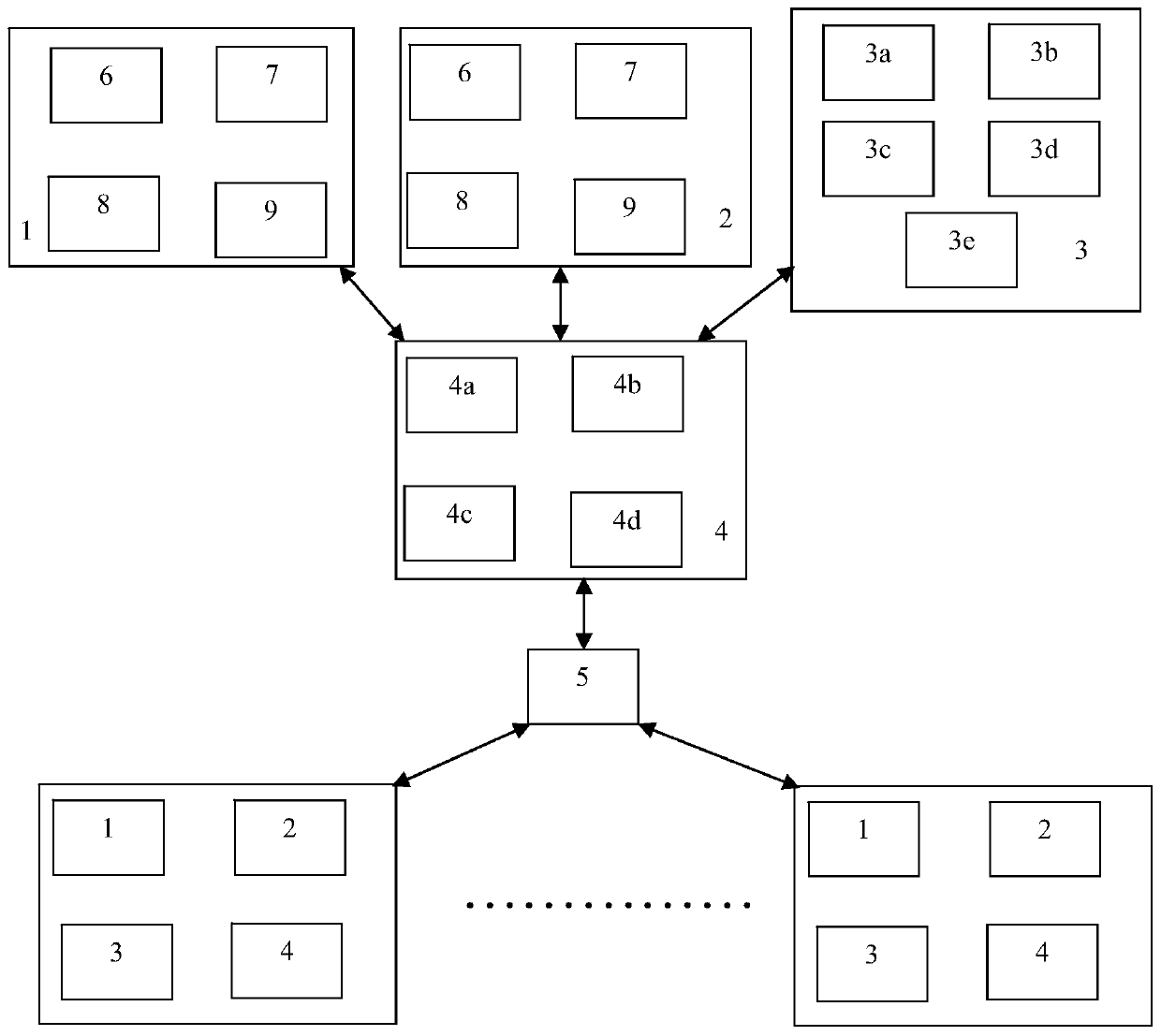Auxiliary diagnosis and treatment system based on artificial intelligence
A diagnosis and treatment system and artificial intelligence technology, applied in computer-aided medical procedures, medical automated diagnosis, medical data mining, etc., can solve problems such as unavailable medication data, poor curative effect, and repeated use of the same
- Summary
- Abstract
- Description
- Claims
- Application Information
AI Technical Summary
Problems solved by technology
Method used
Image
Examples
Embodiment 1
[0033] Such as figure 1 As shown, the present invention provides an artificial intelligence-based assisted diagnosis and treatment system, which at least includes a patient client 1 , a medical client 2 , a database 3 and a server 4 . The patient client 1 , the healthcare client 2 and the database 3 are all communicatively coupled to the server 4 . Alternatively, the patient client 1 , the medical client 2 , the database 3 and the server 4 are communicatively coupled to each other, so that the patient client 1 , the medical client 2 , the database 3 and the server 4 can transmit data among each other. Patient Client 1 is configured for patient use. Patients can enter their identity data and medical record data through the patient client terminal 1 . Identity data are used to confirm their identity and distinguish them from other patients. Identity data may include data such as name, gender, age, and ID number. Medical record data refers to data that can be used to characte...
Embodiment 2
[0042] This embodiment is a further improvement on Embodiment 1, and repeated content will not be repeated here.
[0043] Preferably, the patient client 1 can also collect recovery data of the patient. Recovery data refers to information that characterizes a patient's treatment. The database 3 may include a fifth storage module 3e, so that recovery data can be stored in the fifth storage module 3e. For example, the recovery data can be the response information of the patient after taking the medicine, the time node information of the weakening of the disease, the time node data of the recovery of the disease, etc. By recovering the data, the server 4 is able to evaluate the patient's therapeutic effect to generate an evaluation result for adjusting the reference treatment data. Evaluation results can be divided into first level and second level. The first level indicates that the curative effect meets the expected requirements. The second level indicates that the curative ...
Embodiment 3
[0051] This embodiment is a further improvement on Embodiment 1 and Embodiment 2, and repeated content will not be repeated here.
[0052] Preferably, the identity data includes at least residence information of the patient. When the patient client 1 transmits the collected patient identity data and medical record data to the server 4, the server 4 also obtains reference treatment data and / or reference diagnosis data in the following manner:
[0053] B1: Based on the residence information of the first patient, acquire at least one second patient whose residence distance from the residence of the first patient is smaller than a set threshold.
[0054] Specifically, the data classification unit 4b of the server 4 can extract the residence information of the first patient and place it in its built-in map. Each patient's place of residence information can be placed on the map in the form of dots. The data classification unit 4b will take the residence of the first patient as the...
PUM
 Login to View More
Login to View More Abstract
Description
Claims
Application Information
 Login to View More
Login to View More - R&D
- Intellectual Property
- Life Sciences
- Materials
- Tech Scout
- Unparalleled Data Quality
- Higher Quality Content
- 60% Fewer Hallucinations
Browse by: Latest US Patents, China's latest patents, Technical Efficacy Thesaurus, Application Domain, Technology Topic, Popular Technical Reports.
© 2025 PatSnap. All rights reserved.Legal|Privacy policy|Modern Slavery Act Transparency Statement|Sitemap|About US| Contact US: help@patsnap.com

